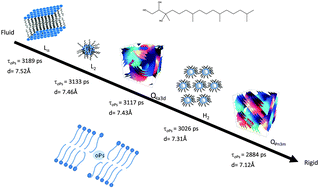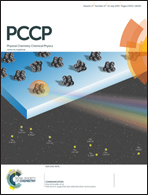Positron annihilation lifetime spectroscopy (PALS): a probe for molecular organisation in self-assembled biomimetic systems
Abstract
Positron annihilation lifetime spectroscopy (PALS) has been shown to be highly sensitive to conformational, structural and microenvironmental transformations arising from subtle geometric changes in molecular geometry in self-assembling biomimetic systems. The ortho-positronium (oPs) may be considered an active probe that can provide information on intrinsic packing and mobility within low molecular weight solids, viscous liquids, and soft matter systems. In this perspective we provide a critical overview of the literature in this field, including the evolution of analysis software and experimental protocols with commentary upon the practical utility of PALS. In particular, we discuss how PALS can provide unique insight into the macroscopic transport properties of several porous biomembrane-like nanostructures and suggest how this insight may provide information on the release of drugs from these matrices to aid in developing therapeutic interventions. We discuss the potentially exciting and fruitful application of this technique to membrane dynamics, diffusion and permeability. We propose that PALS can provide novel molecular level information that is complementary to conventional characterisation techniques.


 Please wait while we load your content...
Please wait while we load your content...